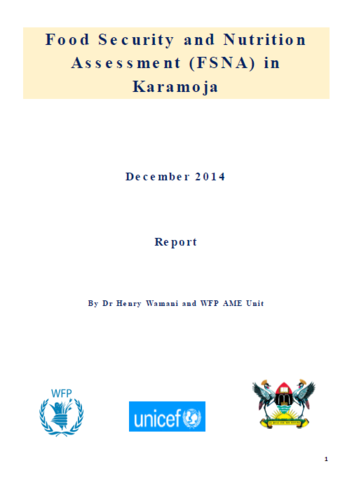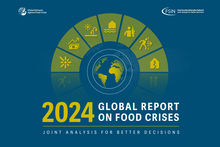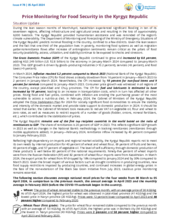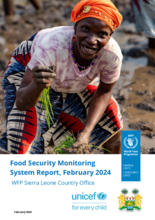
Karamoja sub-‐region is known to suffer from recurrent food insecurity and high levels of malnutrition influenced by several factors including unpredictable climatic conditions, insecurity, crop and livestock pest, parasite and disease incidences, poor sanitation and feeding practices and poor social and economic capital among others. This has resulted into the need for frequent surveys and studies by government, UNWFP, UNICEF and other stakeholders in order to understand the situation, and make appropriate and timely interventions.
Recent Food Security and Nutrition assessments in Karamoja indicate a rather stagnant prevalence of malnutrition above alert level and high levels of food insecurity with households employing the entire spectrum of coping strategies. Crop performance has continued to be poor and therefore unable to provide sufficient food stocks for the households. The May 2014 assessment indicated insufficient household stocks similar to other previous assessment.
In addition, morbidity levels have also remained high across the region with more than half of the children having suffered at least one illness in the two weeks prior to the assessment. Also, non-‐optimal Infant and Young Child Feeding Practices as well as appalling water and sanitation conditions continue to be recurrent problems in Karamoja.
These factors negatively impact the food security and nutrition situation in Karamoja. Despite the various interventions in place to counter the deteriorating food security situation and nutrition, Karamoja still remains vulnerable to food insecurity and malnutrition. With the reported high levels of malnutrition, it is critical to assess the food security and nutrition status and the possible causal factors on a regular basis.
In addition to understanding the general food security status of the entire population it was deemed necessary to incorporate a special analysis for the Extremely Vulnerable Households (EVH) in Karamoja sub-‐region. The food security and nutrition situation of the EVH households in Karamoja is fragile owing to their lack of productivity. EVH households have low ability to cope and lack resilience to recurrent shock and are generally worse off than the general population and thus the need to monitor them closely.
The current assessment was therefore part of the routine monitoring strategy normally done semi-‐annually to provide critical information on key performance indicators to enable effective planning for the sub-‐region.
| Document | File |
|---|---|
| Full Report [English] |
PDF | 3.95 MB
Download
|



